Another significant section of the devastated Beirut Port silos collapsed on Tuesday morning in a cloud of dust.
No injuries were reported — the area had been long evacuated — but the collapse was another painful reminder of the horrific August 2020 explosion that killed over 600 people, injured more than 6,000 others, and set off the latest series of crises engulfing this ancient Mediterranean country that has seen far more than its share of tragedies.
The collapse left the silos’ southern part standing next to a pile of charred ruins. The northern block had already been slowly tipping over since the initial explosion two years ago but rapidly deteriorated after it caught fire over a month ago due to fermenting grains.
Another significant section of the devastated Beirut Port silos collapsed on Tuesday in a cloud of dust.
No injuries were reported — the area had been long evacuated — but the collapse was another painful reminder of the horrific explosion. https://t.co/BbEQ5w55pu pic.twitter.com/eM5v72XEKs
— The Associated Press (@AP) August 23, 2022
The 50-year-old, 48-meter (157 feet) tall silos had withstood the force of the explosion two years ago on August 4, 2020, effectively shielding the western part of Beirut from the blast, but the structure has been deteriorating ever since.
In late July, part of the northern block collapsed for the first time. And on August 4—the second anniversary of the deadly Beirut explosion—a large section of the grain silos collapsed, destroying roughly a fourth of the structure and setting the stage for this latest collapse.
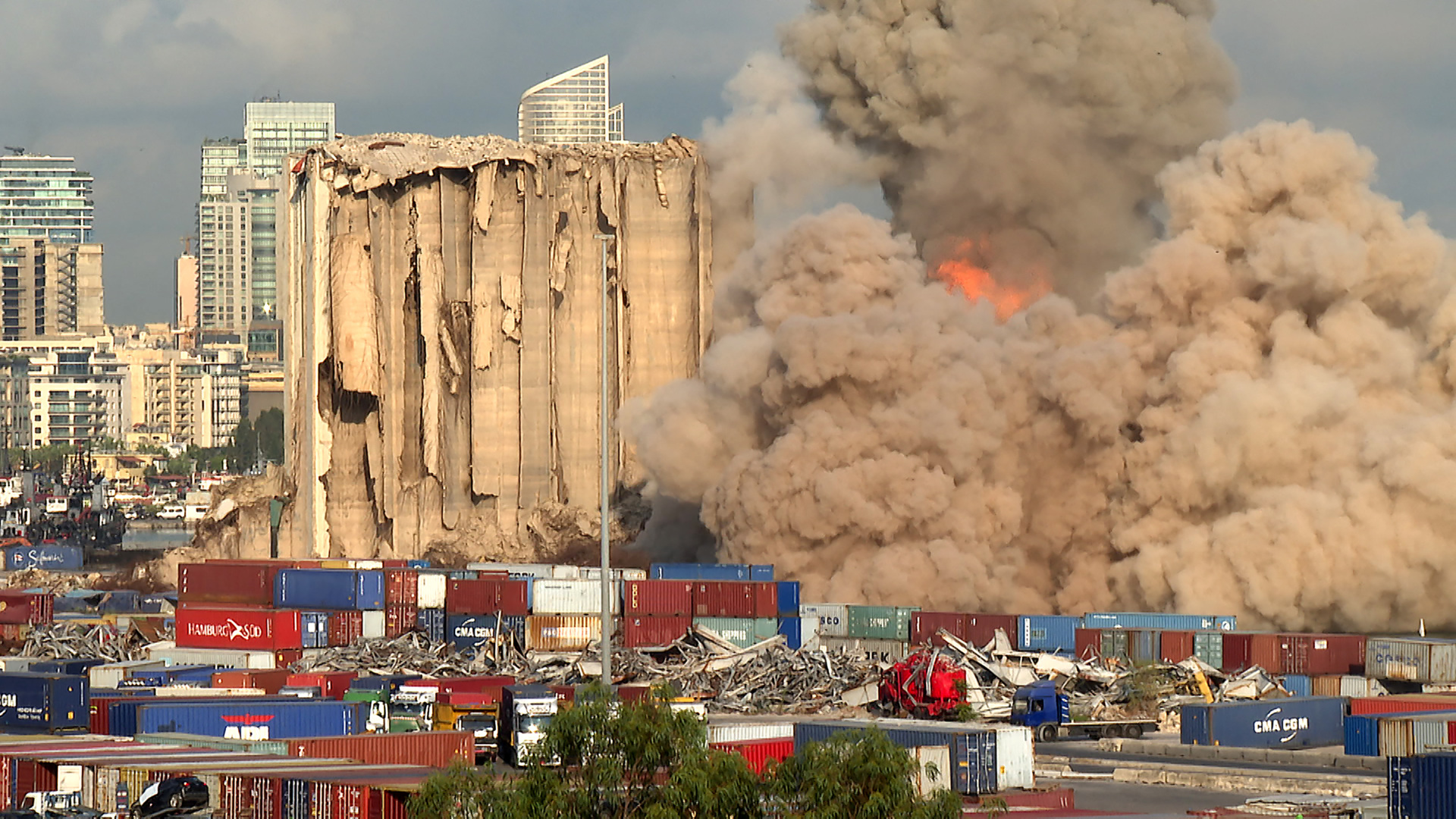
This AFPTV footage shot on August 23, 2022, shows a smoke plume rising after the new collapse of the northern section of the grain silos at the port of Lebanon’s capital Beirut. (DYLAN COLLINS/AFPTV/AFP via Getty Images)
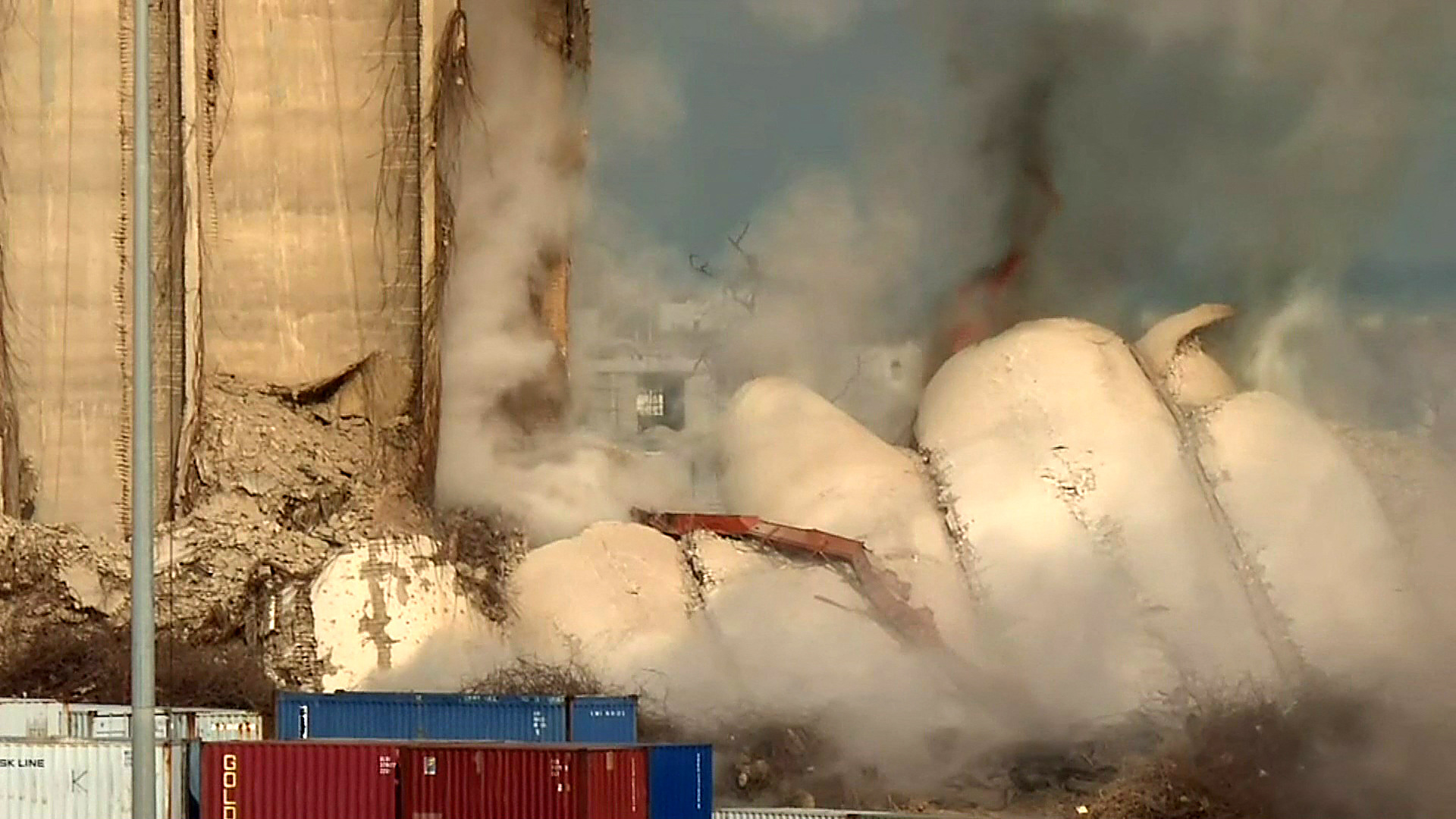
Footage of the newly-collapsed northern section of Beirut’s grain silos on August 23, 2022. (DYLAN COLLINS/AFPTV/AFP via Getty Images)
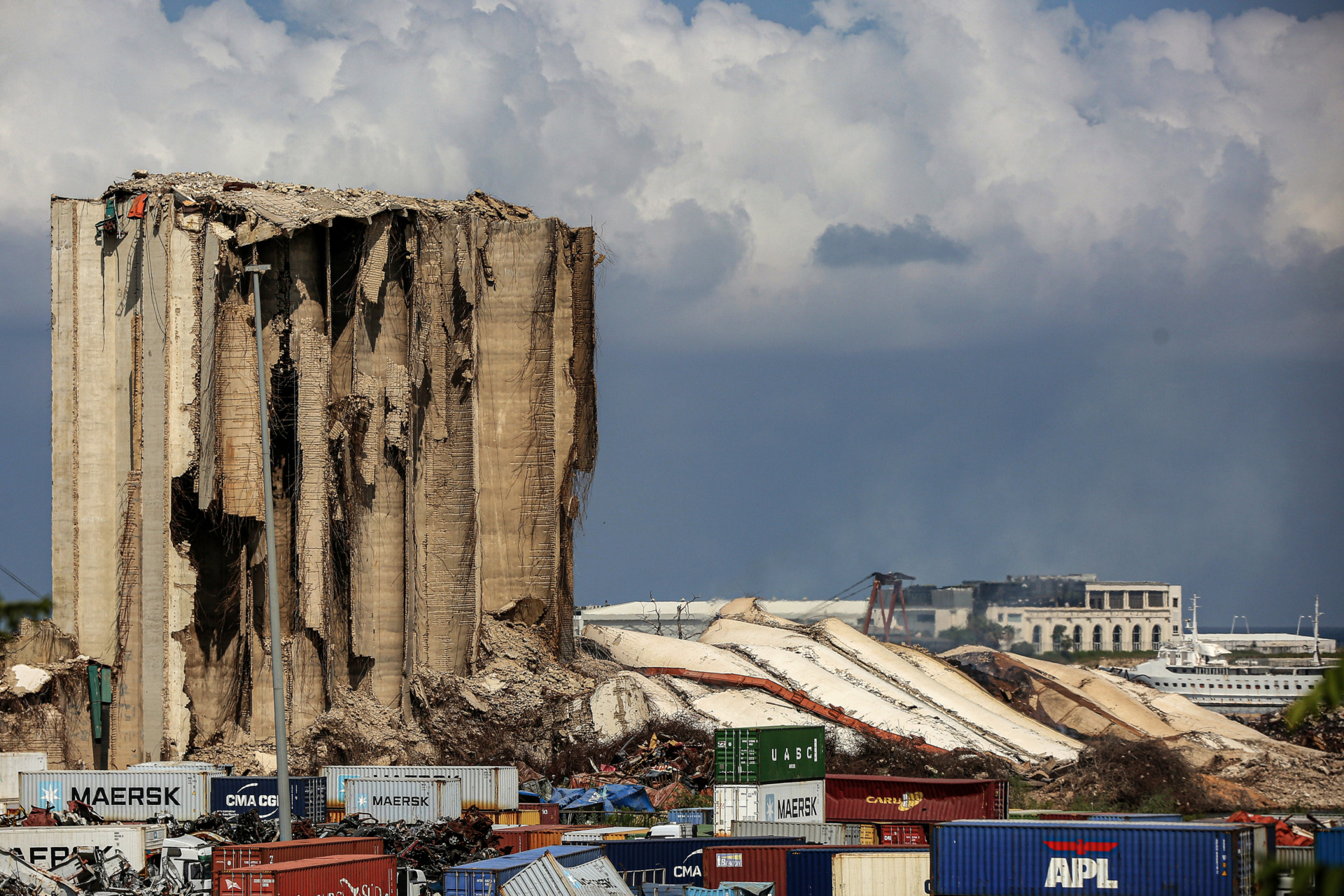
An image of the collapsed northern part of Beirut’s port iconic grain silos on August 23, 2022. (Marwan Naamani/Getty Images)
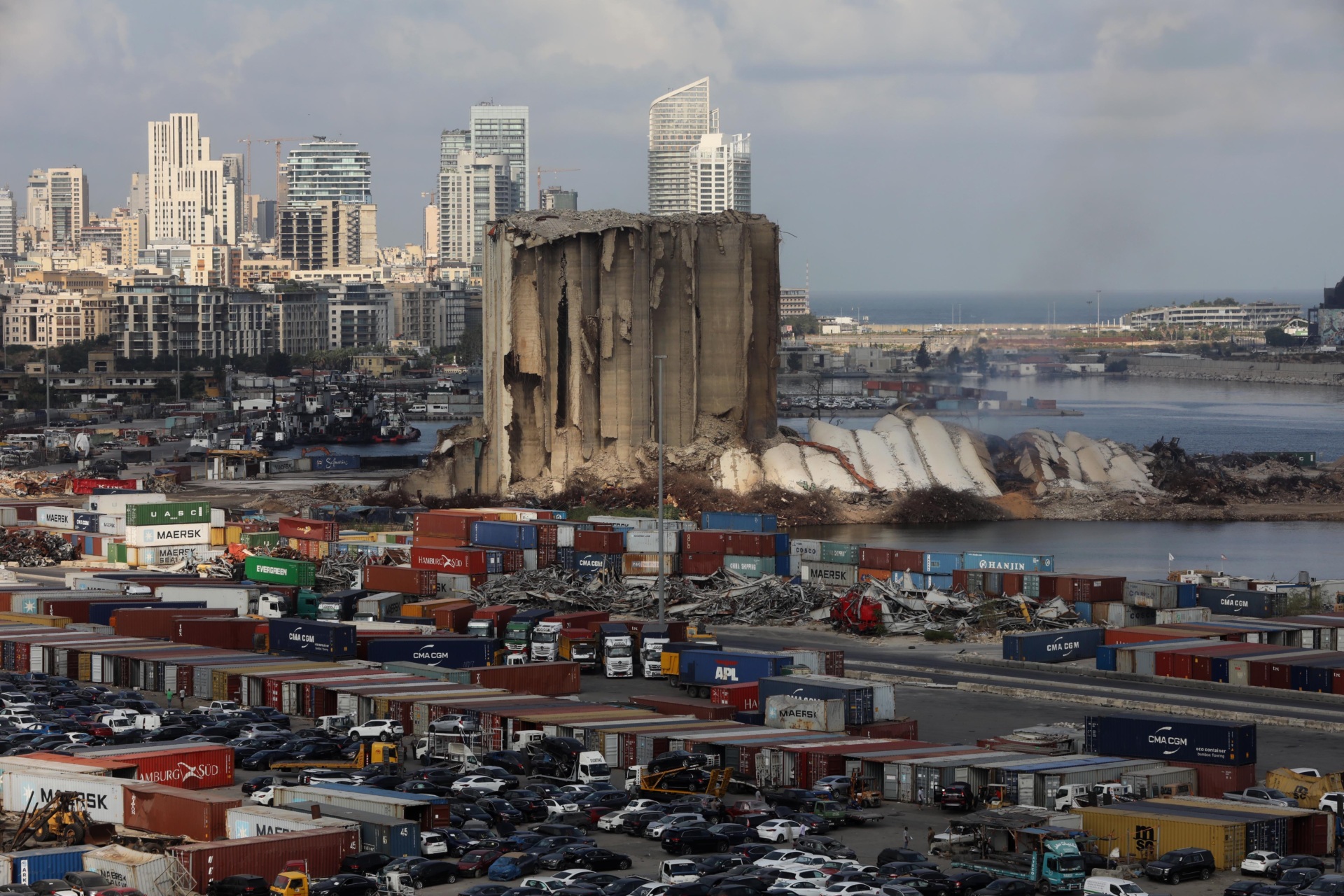
A general view shows the northern collapsed section of the silos in the Port of Beirut on August 23, 2022. (Marwan Tahtah/Getty Images)

A view of the smoldering collapse of the northern part of Beirut’s port iconic grain silos on August 23, 2022. (Marwan Naamani/Getty Images)
Emmanuel Durand, a French civil engineer who volunteered for the government-commissioned team of experts, told the Associated Press that the speed of the tilt rapidly accelerated overnight on Monday, just hours before the collapse.
“There was a very sharp acceleration, which was expected,” Durand explained. “When this happens, you know it’s going to go.”
The country’s caretaker environment minister, Nasser Yassin, told Lebanese TV that the government will now look into how to ensure the southern block remains standing. He urged residents near the port to wear masks, and said experts would conduct air quality tests.
In April, the Lebanese government decided to demolish the silos, but suspended the decision following protests from families of the blast’s victims and survivors. They contend that the silos may contain evidence useful for the judicial probe, and that it should stand as a memorial for the 2020 tragedy.
On July 14, a fire broke out in the northern block of the silos due to the fermenting grains. Firefighters and Lebanese Army soldiers were unable to put it out and it smoldered for over a month. Officials had warned that the silo could collapse, but feared risking the lives of firefighters and soldiers who struggled to get too close to put out the blaze or drop containers of water from helicopters.
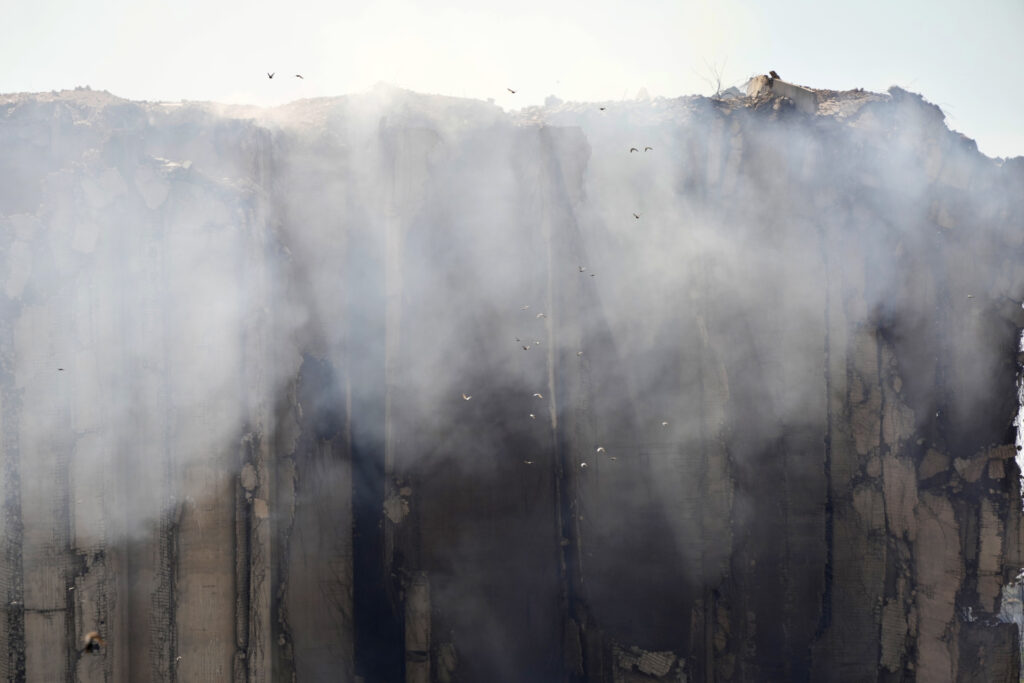
Birds fly as smoke rises from the silos in the north block of Beirut Port, Monday, July 25, 2022, in Beirut, Lebanon, after they caught fire. (AP Photo/Hassan Ammar)
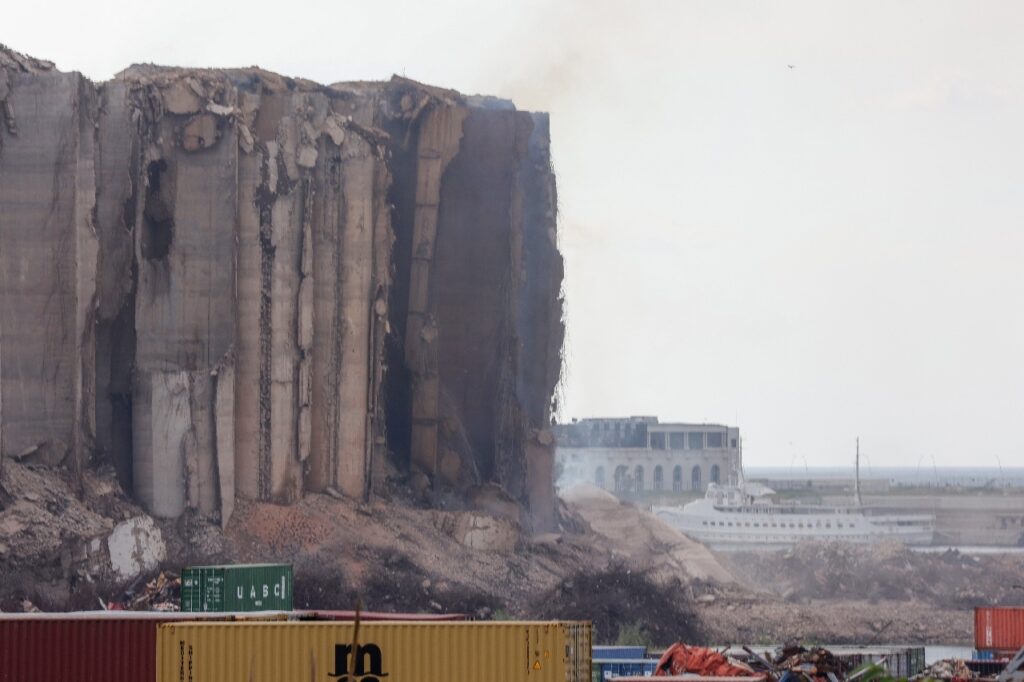
A view of the heavily damaged grain silos at the port of Beirut on July 31, 2022, following a partial collapse due to an ongoing fire. (Anwar AMRO/AFP)
In a statement on July 27, Lebanon’s caretaker prime minister Najib Mikati warned that the northern section of silos was in danger of collapsing and ordered Lebanon’s army and civil defense staff to prepare. The environment and health ministries also issued instructions to residents living near the port to stay indoors in well-ventilated spaces.
Durand last month told the Associated Press that the fire from the grains had sped up the speed of the tilt of the shredded silo and caused irreversible damage to its weak concrete foundation.
The silos have become a fixture in the ongoing controversy over the deadly August 2020 blast, which was caused by a negligently stored stockpile of ammonium nitrate—a highly explosive chemical used in fertilizers—that had been stored at the port for years.
As Breitbart News reported:
Lebanon’s government on April 14 ordered the demolition of Beirut’s grain silos citing concerns that they might collapse in the coming months due to damage sustained in August 2020. People who wanted to preserve the silos as a memorial site to the victims of the August 2020 Port of Beirut explosion objected to the planned action through a handful of lawsuits that were pending as of mid-June.
Efforts to determine responsibility for the Port of Beirut’s explosion in August 2020 have repeatedly stalled in the two years since the tragedy, which not only eviscerated parts of the Lebanese capital but also destroyed much of the beleaguered nation’s food supply at the now collapsing grain silos.
“Lebanese government officials —including President Michel Aoun and then-Prime Minister Hassan Diab — had previous knowledge of the explosive material stored unsafely in the port, but failed to do anything about it,” the National, a U.A.E.-based newspaper, reported on June 16, referring to the ammonium nitrate stores.
“[M]ultiple Lebanese authorities were, at a minimum, criminally negligent under Lebanese law in their handling of the cargo, creating an unreasonable risk to life,” Human Rights Watch concluded in August 2021 citing evidence available at the time.

Relatives of victims of the deadly 2020 Beirut port explosion hold portraits of their lost loved ones as they block a main highway near the port demanding the authorities put out a fire that has been smoldering in the ruins of the silo’s collapsed northern block, in Beirut, Lebanon, on August 23, 2022. The smoldering structure fell over on Tuesday morning into a cloud of dust, leaving the southern block standing next to a pile of charred ruins. (AP Photo/Bilal Hussein)
All of this exacerbates the already devastating food crisis engulfing the Mediterranean country. Last week, satellite photos analyzed by the Associated Press showed that a Ukrainian grain shipment bound for Lebanon ended up in Syria instead.
“Lebanon is suffering from just about every crisis imaginable, very much including a food crisis. The U.N. estimates 90 percent of Lebanese families are coping with food shortages and many are teetering on the edge of malnutrition, with a large number of potential economic crises poised to push them right over,” Breitbart News’ John Hayward reported.
The Associated Press contributed to this story.
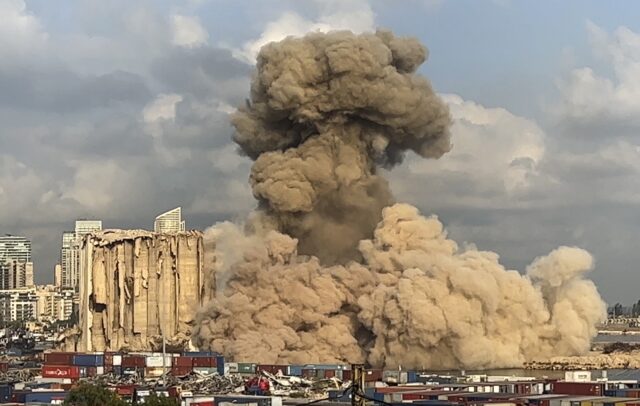
COMMENTS
Please let us know if you're having issues with commenting.